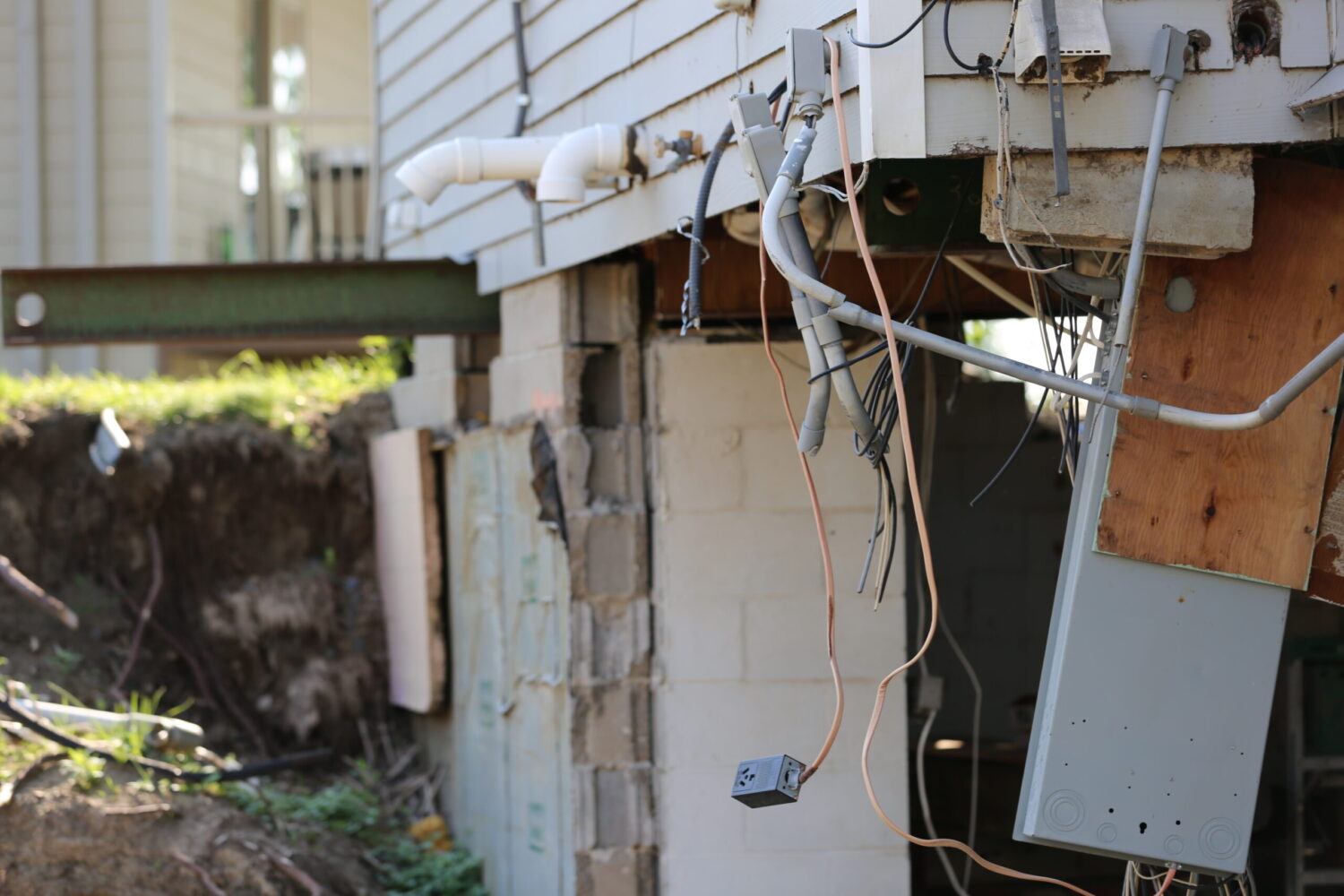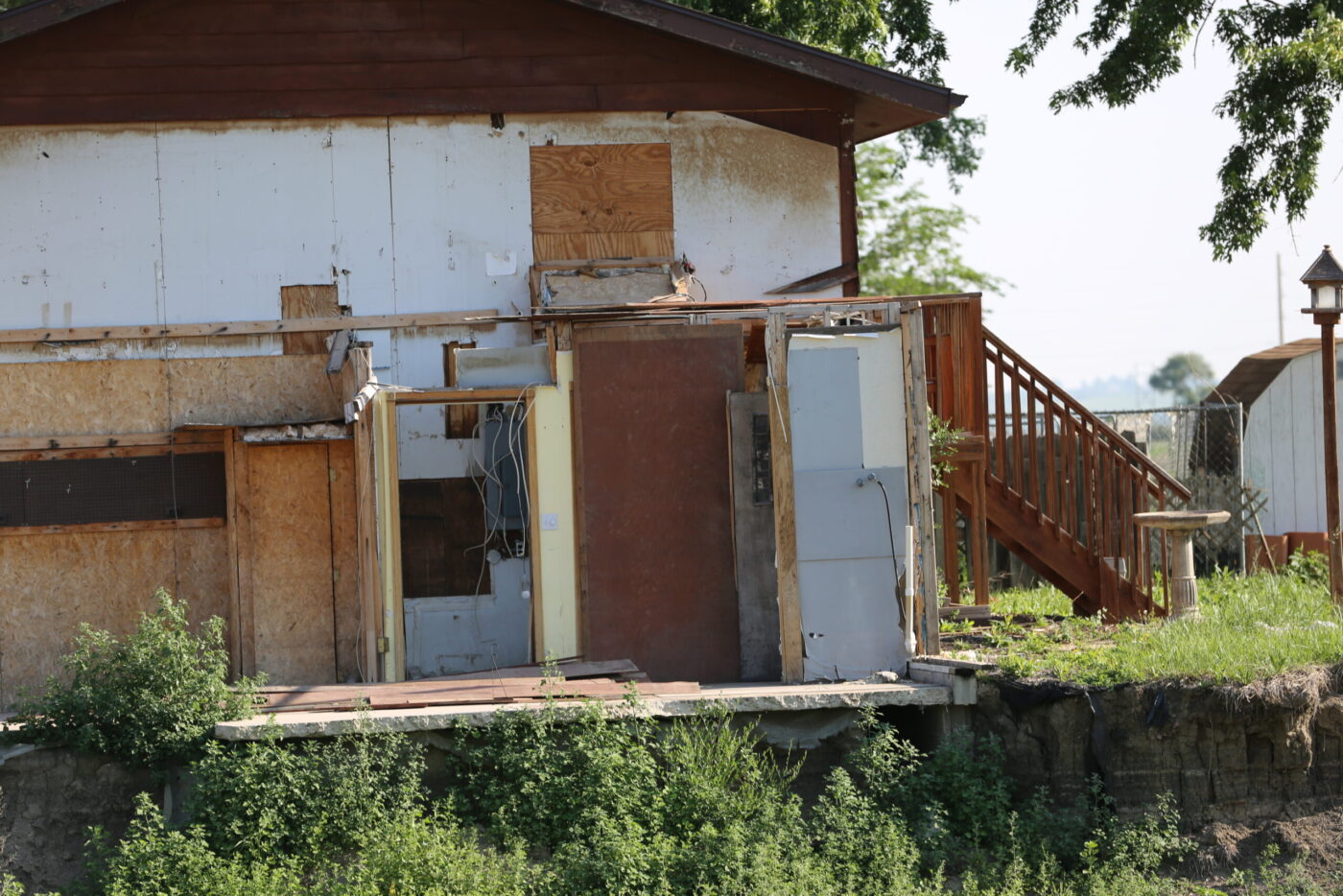
Malcolm and Morgan Speichinger stand in the backyard of their McCook Lake home on June 11, 2025. (Joshua Haiar/South Dakota Searchlight)
McCOOK LAKE — Morgan and Malcom Speichinger still live in a house that was damaged in a flood one year ago, because they have no better option.
“If we could afford to move, we would,” Morgan said.
Three days of rain last June 20-22 in southeast South Dakota surpassed 17 inches in some locations. Local and state authorities implemented a half-century-old diversion plan to handle record-high water that was flowing down the Big Sioux River toward Sioux City. They built a temporary levee across Interstate 29 that tied in with permanent levees to divert water into McCook Lake.
The water was supposed to flow through the lake and drain toward the nearby Missouri River. Instead, on the night of June 23, it overwhelmed the lake and inundated many of the homes around it. Many residents said the flood surge came suddenly, after they’d received little to no warning.
The water carved deep ravines into the land, undercutting trees and power lines. The Speichingers’ home was one of more than 100 near the lake that were damaged. Twenty homes were destroyed.
While the family received the maximum $42,500 of assistance from the Federal Emergency Management Agency, they estimate they’ve spent about $100,000, and work on the home remains.
“We got a Bobcat and did what we could,” Malcom said, referring to a popular brand of skid-steer loader. “But our yard’s still a trench. It’s not that safe for the kids.”
Their mortgage lender granted a six-month forbearance after the flood, but they’ve had to make payments since then on a house that was barely habitable.
“There was a stretch where we met with a bankruptcy lawyer,” Morgan said. “We didn’t think we’d make it. If FEMA hadn’t come through, we would’ve walked away like our neighbors did.”
‘We have nothing’: Flood victims say government failures continue after botched flood warning
Three nearby homes were either abandoned or demolished.
In interviews with flood victims and volunteers, a picture emerges one year after the flood: a community still deeply wounded, still struggling with limited resources, and still lacking the kind of assistance that many assumed would follow such a large-scale disaster.
Renae Hansen of the local Izaak Walton League helped lead local recovery efforts.
“When a flood like that happens, you expect some official to show up with a megaphone and a plan,” Hansen said. “Instead, it was us — neighbors helping neighbors. We did it because nobody else was.”
The sense of abandonment still runs deep. The feeling began the night of the flood, after then-Gov. Kristi Noem conducted a press conference that afternoon and did not advise McCook Lake residents to evacuate. She said they should protect their personal property, “because we do anticipate that they will take in water.”
“That’s what we’re preparing for,” Noem said. “If we don’t, then that’s wonderful that they don’t have an impact, but they could see water flowing into McCook Lake.”
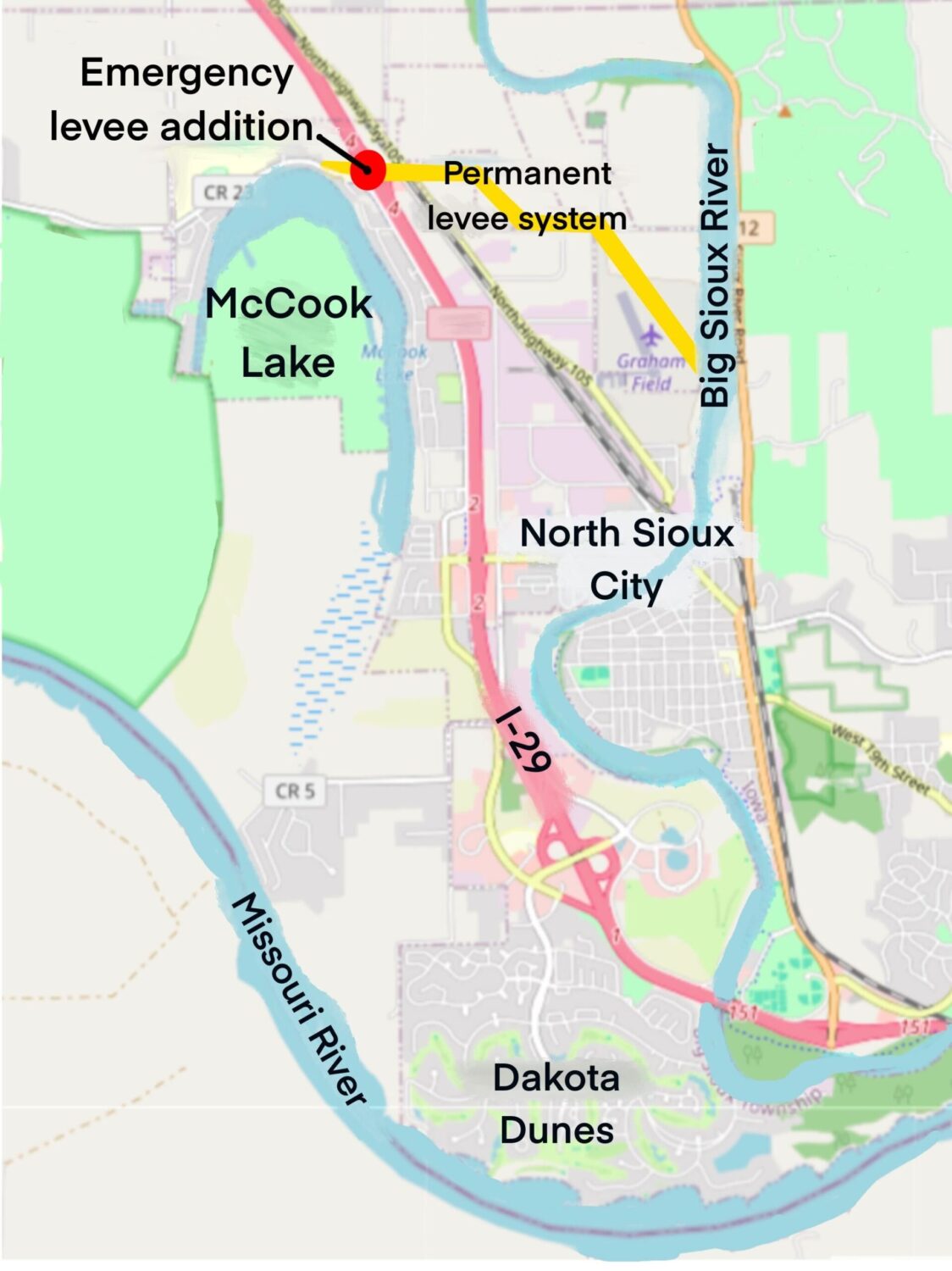
After the press conference, Noem flew to a political fundraiser in Tennessee, which is where she was when the flood surge hit McCook Lake and sent people fleeing. During the aftermath, Noem refused to deploy the National Guard to help clean up the area, after she’d sent Guard troops multiple times to help Texas secure its border with Mexico.
Noem later resigned to become secretary of the federal Department of Homeland Security, which includes oversight of FEMA. New Gov. Larry Rhoden recently visited North Sioux City as part of his “Open for Opportunity Tour.”
“Our new governor went to a business in town and called it a success story,” Hansen said. “He didn’t come to see the disaster zone. It’s like we don’t exist. We were sacrificed to protect those businesses.”
Like the Speichingers, Hansen said the maximum $42,500 of help from FEMA is hardly enough to replace a foundation, much less an entire home.
“There are families paying mortgages on homes that no longer exist,” Hansen said. “One woman had moved in 11 months before the flood. Her last furniture delivery was two weeks before the water came. It’s all gone.”
Hansen said some neighbors are walking away from their mortgages, renting a new place, and choosing a damaged credit score over paying for a destroyed home.
Multiple residents worked with a lawyer and sent the state a notice of a potential lawsuit, alleging an unconstitutional taking of private property for protection of other areas, but no lawsuit has been filed so far.
‘Every time it rains, you wonder’
Kathy Roberts, who owns a home on Penrose Drive, calls herself one of the “lucky ones.” With a partner who had construction experience and support from friends, she has nearly finished rebuilding.
“But I’m still having nightmares,” said Roberts, who works in mental health. “And I know my neighbors are, too. There’s PTSD all over this community. Every time it rains, you wonder.”
Malcom Speichinger can attest to that.
“I’ve had dreams where the house floods again. It’s hard not to go there.”
He’s certain the area will have severe flooding again.
“And we’re still not ready for it,” he said.
New government, new plan
In the wake of the disaster, residents petitioned to overhaul the North Sioux City government. Voters replaced the eight-member alderman system with a new mayor-commission format. That allowed voters to elect an entirely new commission and mayor in one election. And in April, a new mayor and commissioners were sworn in.
“There’s some hope there now,” Hansen said. “We’ve already seen more engagement from the new commission. But the fact that it took a total government reset to get basic attention should tell you how bad things got.”
At the heart of residents’ frustration lies the emergency flood plan last updated in 1976 — one that sent floodwaters into the McCook Lake neighborhood intentionally, in an effort to divert it from the more heavily populated areas of North Sioux City and Dakota Dunes.
And so, two months into his term, North Sioux City Mayor Chris Bogenrief said implementing a new mitigation plan is at the top of his agenda.
Bogenrief said the county and the Army Corps of Engineers envision a diversion farther upstream on the Big Sioux River. But he said that effort is still in the early study stages and could take a decade or more to materialize.
“We don’t feel like we can wait that long,” he said. “People are trying to rebuild.”
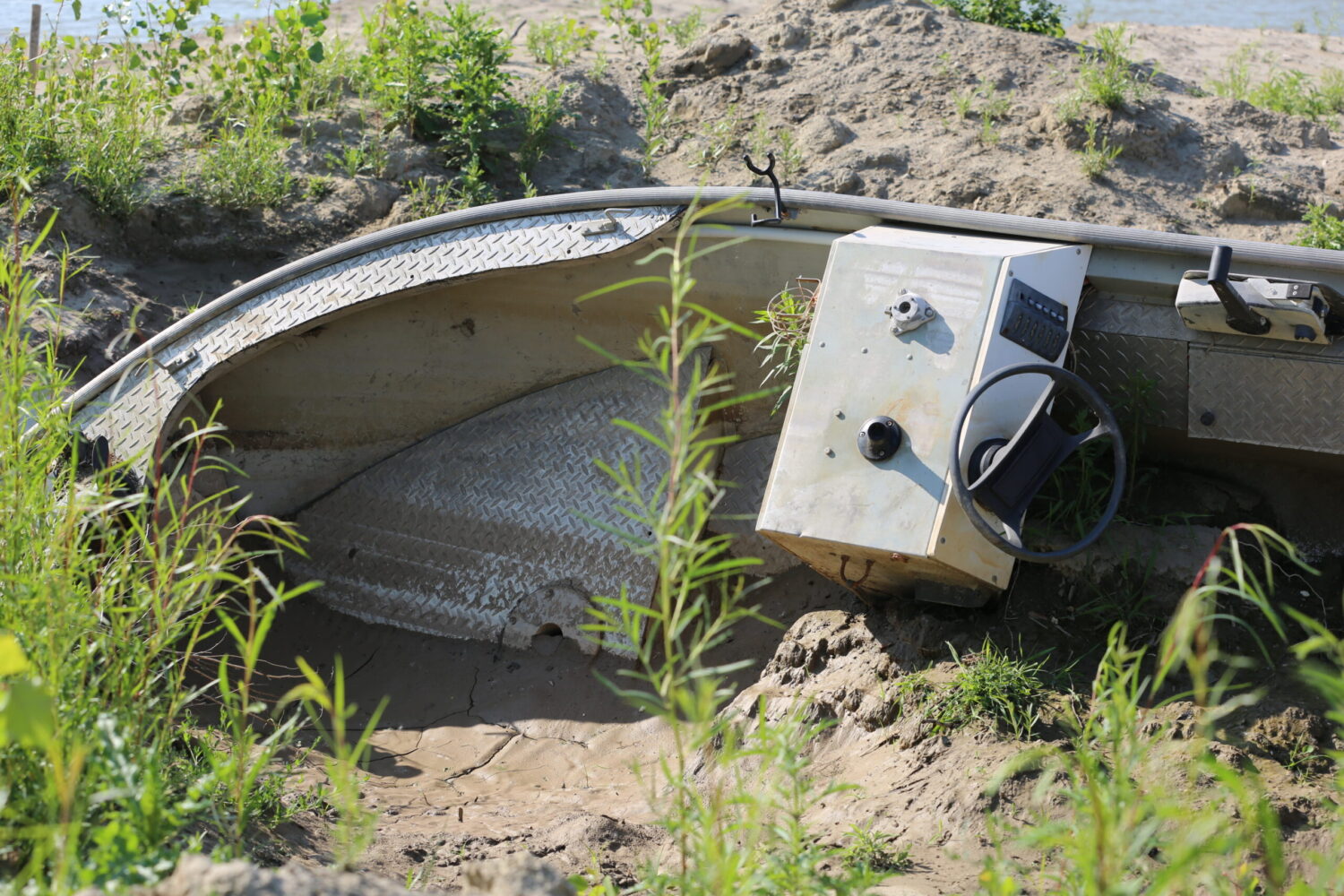
So, the city commissioned Stockwell Engineers to explore three short-term plans.
“We’re applying for hazard mitigation grants from FEMA to help cover the cost,” Bogenrief said. “But one way or another, we can’t sit around and wait.”
McCook Lake is an oxbow — a horseshoe-shaped former segment of the Missouri River that became a lake when the river cut a new, straighter path. The first two short-term concepts would use a new channel and culvert system to better route water into McCook Lake and out through one end or the other of the lake. The third would reroute floodwaters to the west prior to reaching McCook Lake, and into undeveloped Goodenough and Mud lakes before draining into the Missouri River.
Bogenrief said the cost estimate for implementing a short-term plan is up to $20 million. The design cost of the projects is about $1.7 million, he said, with North Sioux City expected to cover about 10% and FEMA covering the rest.
The state has drafted a $15.4 million plan to help communities recover from the 2024 flooding. The plan would utilize federal Community Development Block Grant Disaster Recovery funds to rebuild infrastructure in areas hardest hit.
GET THE MORNING HEADLINES.
The plan proposes spending more than $12 million on infrastructure projects like road repairs, stormwater systems, and improvements to McCook Lake. The rest is for future planning and administration.
The plan says the unmet recovery need in the state still totals more than $63 million. That includes $3.1 million categorized as owner-occupied damage, with the rest dealing with infrastructure.
Bogenrief hopes the city can free up local money to start a homeowner recovery fund as those infrastructure dollars come in.
Many residents lacked flood insurance, Bogenrief said, because FEMA did not classify the area as a floodplain.
“The only way it floods is if the emergency flood plan is executed and the interstate is shut down, which is what happened,” he said.
A lake full of everything
The state Department of Game, Fish and Parks awarded a $1 million contract to Three Oaks Inc. to remove debris and sediment from the lake, said the department’s Kip Rounds. The department is tasked with managing the lake cleanup effort because it manages the waters of the state.
Using an excavator on a floating barge, the company is three weeks into a project scheduled to finish by Aug. 1. Rounds said the contractor is nearly halfway though removing an estimated 20,000 cubic yards of sediment.
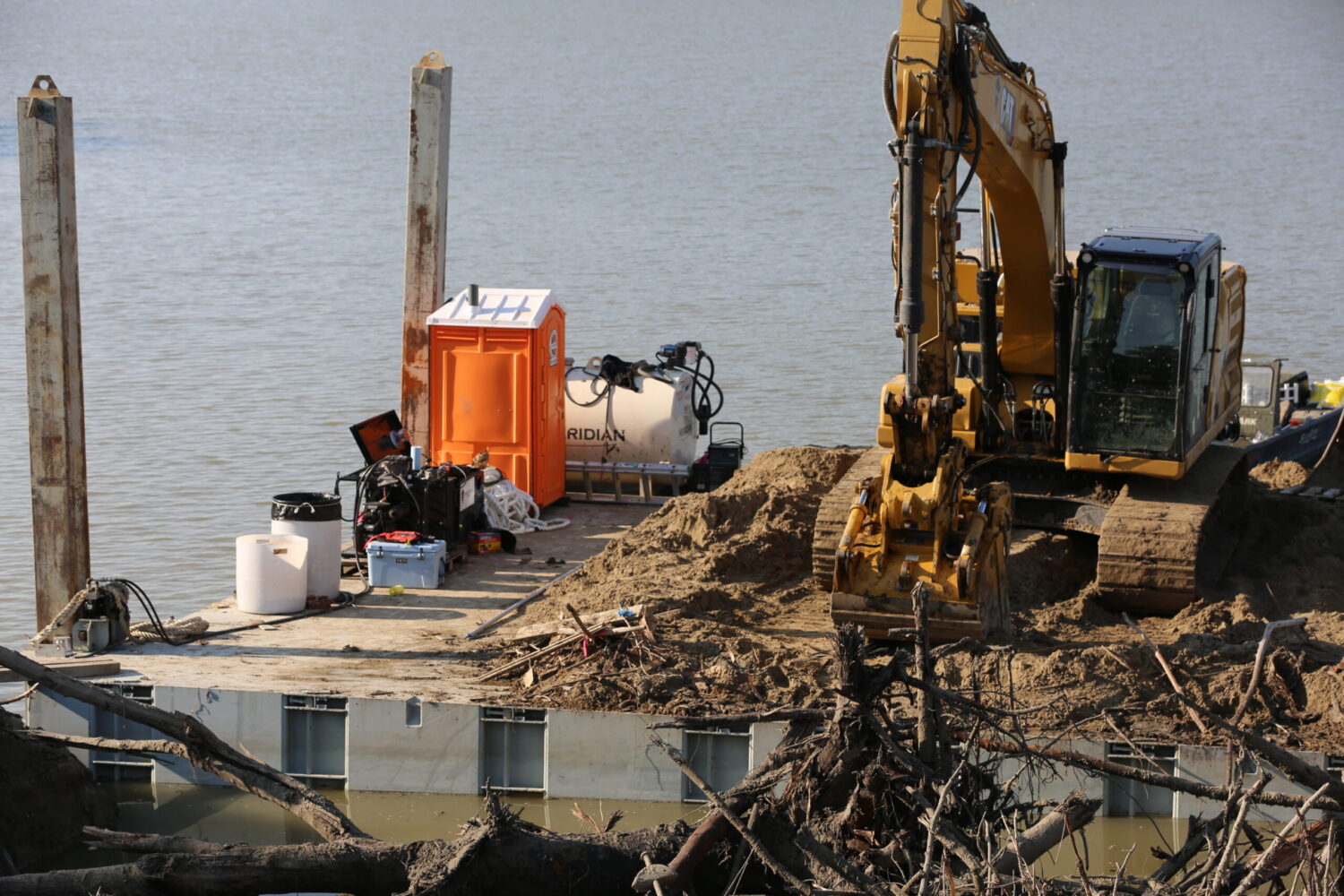
McCook Lake Association President Dirk Lohry said there’s other work to do. He said local residents hope to raise $250,000 to extend Three Oaks’ work, but that campaign hasn’t launched. A funding request to extend the contract with state money failed during the recent legislative session.
Lake resident Kathy Roberts said the road to healing is a long one, but she sees one clear takeaway.
“This flood taught me how important your neighbors are,” she said. “When the worst happens, it’s not FEMA or the state that shows up — it’s the person living next door.”



